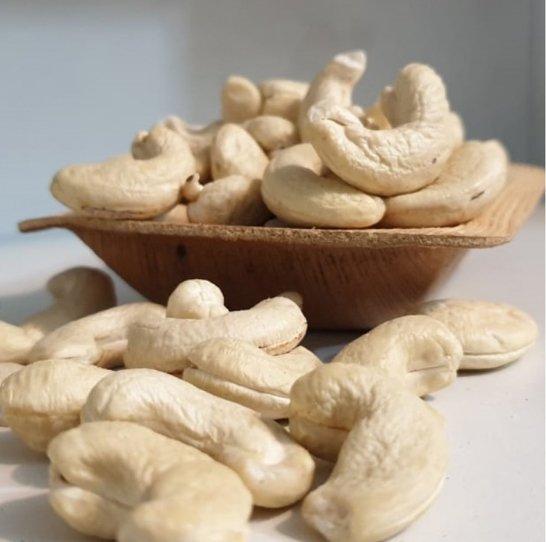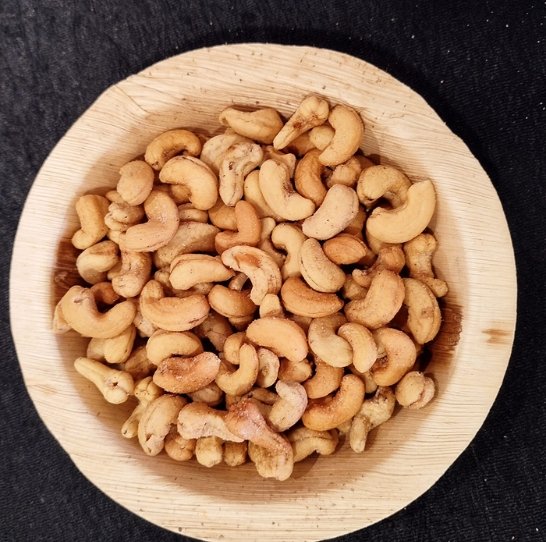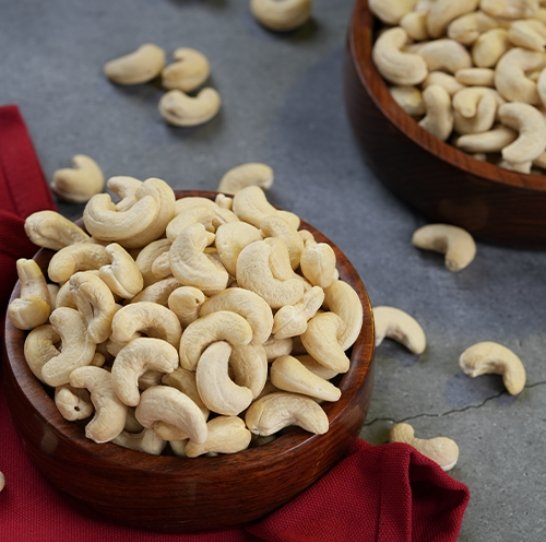
Goa cashew (Kaju Or Caju)
Goa cashew, locally known as kayu or caju, is a well-known product of Goa and is considered the state crop. Cashews were introduced by the Portuguese around 1570 and have become an integral part of Goa’s agriculture, economy and culture.
Description
- Cashews are grown on 55,000 hectares and occupy over 50 % of the cultivated area in Goa.
- They are known for their medium to large sized nuts, which are a specialty of the region.
- The cashew nuts are harvested after they have naturally matured and fallen to the ground to ensure their full maturity and flavor.
- Most of the plantations are organically farmed, with traditional processing methods being passed down from generation to generation.


Key Facts
- Nutritional value: Rich in magnesium, iron, calcium, carbohydrates and fiber, low in fat, promotes heart health by lowering bad cholesterol.
- Culinary use: Widely used in Goan cuisine, including desserts, curries and snacks, adding a nutty crunch and flavor.
- Cashew apple products: The cashew apple is used to make feni, a famous Goan alcoholic drink, and other products such as squash, chutney, jam and sweet wafers.
- Promising varieties: There are 13 varieties in Goa, including Balli-1, Tudal-1, Vengurla-4 and Bhato, all characterized by unique characteristics in terms of nut and apple size and yield.
- Chemical composition: Detailed nutritional content varies by cashew variety, highlighting their health benefits.
- Geographical Indication: Goa Cashew has Geographical Indication status, highlighting its uniqueness and strong regional link.